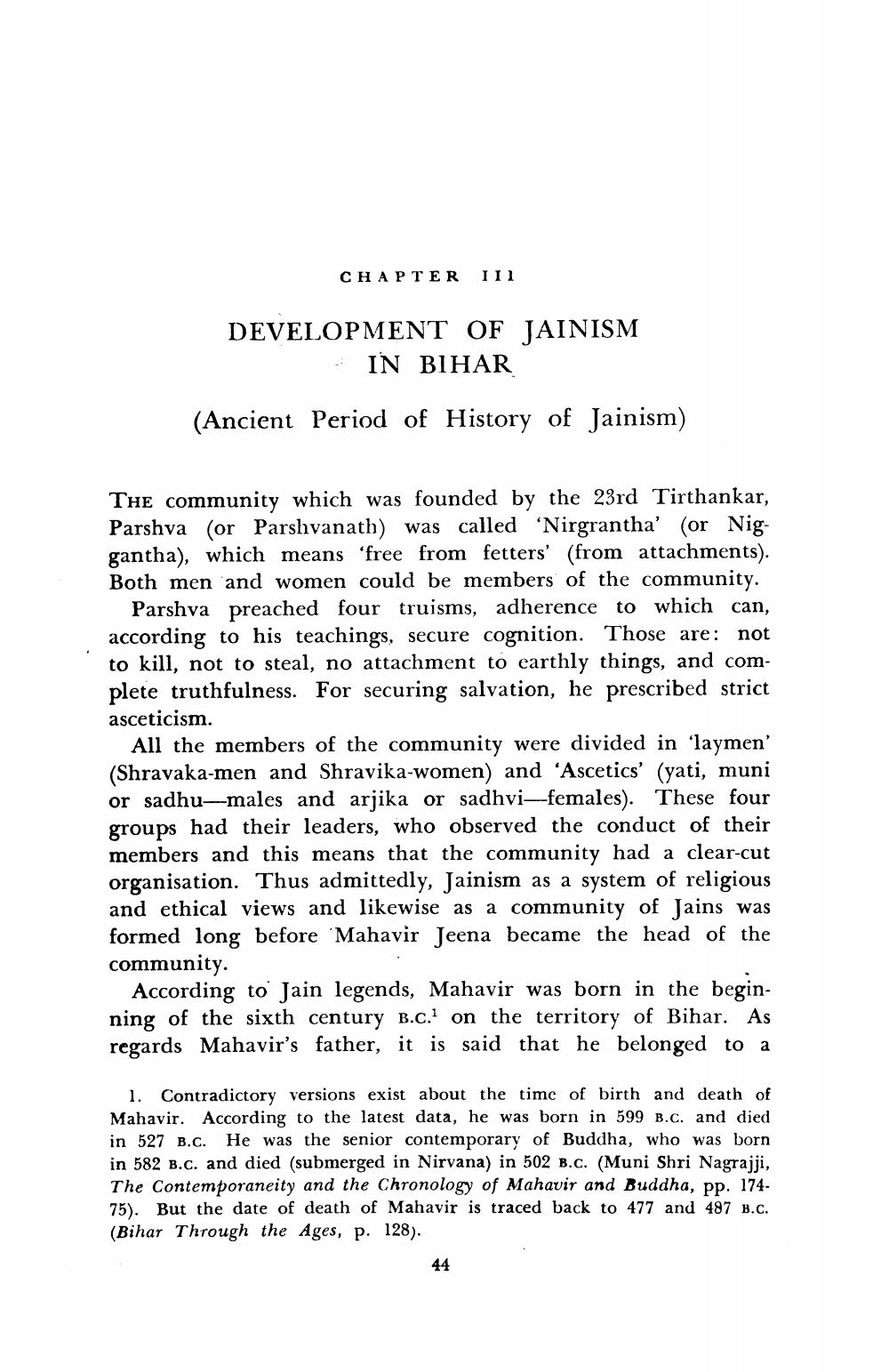________________
CHAPTER II 1
DEVELOPMENT OF JAINISM IN BIHAR
(Ancient Period of History of Jainism)
THE Community which was founded by the 23rd Tirthankar, Parshva (or Parshvanath) was called 'Nirgrantha' (or Niggantha), which means 'free from fetters' (from attachments). Both men and women could be members of the community.
Parshva preached four truisms, adherence to which can, according to his teachings, secure cognition. Those are: not to kill, not to steal, no attachment to earthly things, and complete truthfulness. For securing salvation, he prescribed strict
asceticism.
All the members of the community were divided in 'laymen' (Shravaka-men and Shravika-women) and 'Ascetics' (yati, muni or sadhu-males and arjika or sadhvi-females). These four groups had their leaders, who observed the conduct of their members and this means that the community had a clear-cut organisation. Thus admittedly, Jainism as a system of religious and ethical views and likewise as a community of Jains was formed long before Mahavir Jeena became the head of the community.
According to Jain legends, Mahavir was born in the beginning of the sixth century B.C.1 on the territory of Bihar. As regards Mahavir's father, it is said that he belonged to a
1. Contradictory versions exist about the time of birth and death of Mahavir. According to the latest data, he was born in 599 B.C. and died in 527 B.C. He was the senior contemporary of Buddha, who was born in 582 B.C. and died (submerged in Nirvana) in 502 B.C. (Muni Shri Nagrajji, The Contemporaneity and the Chronology of Mahavir and Buddha, pp. 17475). But the date of death of Mahavir is traced back to 477 and 487 B.C. (Bihar Through the Ages, p. 128).
44




